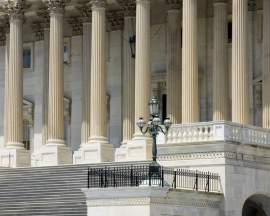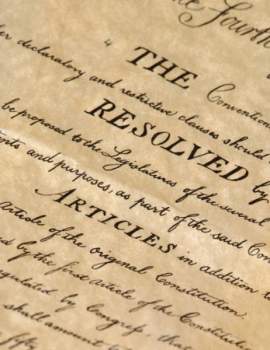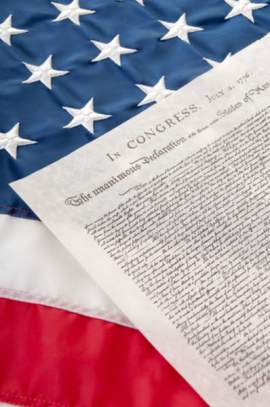
Understanding the 22nd Amendment

Popular In Constitution
Purpose Of Lifetime Appointment And Pros And Cons Enumerated Powers Bicameral Legislature Background Article 3 Of The Constitution We The People 1st Amendment Who Wrote The Constitution Judicial Review Equal Protection Clause Three Fifths Compromise 10th Amendment 5th Amendment
Similar to the 20th Amendment, the 22nd Amendment outlines the term length of the President, specifically addressing the issue of how many terms an elected President may seek. Congress passed the 22nd Amendment on March 21st, 1947, and the Amendment process was completed when it was ratified on February 27th, 1951 by the necessary number of states.
The 22nd Amendment strictly limits that the Presidential Office shall not be held by a person more than two times. The provision also holds that any person holding the position of President for more than two years of any given term cannot be elected to the office of President more than once.
The 22nd Amendment has roots as far back as the first President of the United States, George Washington. Washington limited his Presidency to only two terms, as well as did Thomas Jefferson. However, prior to the 22nd Amendment, there was no actual legislation in place restricting the amount of terms for which a President could be eligible. The Fathers of the Constitution simply implemented that a term would last four years. Their belief was a reliance on the people and the Electoral College and belief that a third term would be prevented based on these factors.
The restriction of two terms of Presidency simply became a respected standard and was adhered to until Franklin D. Roosevelt chose to run for a third term in 1940. Roosevelt even became elected for a fourth term in 1944, but died in office in 1945. Many cite the United States' future involvement in World War II as a reason that FDR was elected for a third term. However, Roosevelt was not the only one to seek a third term, but rather the only President to have served more than two terms. Ulysses S. Grant and Theodore Roosevelt both sought the office of President for more than two terms, but were unsuccessful.
The 22nd Amendment first applied to Dwight D. Eisenhower and he believed that running for a third term would essentially undermine the power that the Presidential Office would have in the world of politics. However, many have tried to repeal the Twenty-Second Amendment and have managed to introduce into the Amendment process certain bills and proposals either completely removing the two-term limit, or revising it to bar more than two consecutive terms. Since the ratification of the 22nd Amendment, there have only been three presidents who were eligible for a second term. Jimmy Carter and George H.W. Bush only served one term, and current President Barack Obama is also eligible, this current term being only his first.
Under the 22nd Amendment, the only President that would have been eligible to serve more than two terms would be Lyndon B. Johnson. LBJ became President as a result of the assassination of John F. Kennedy, and served the remainder of his term which totaled fourteen months. Under the 22nd Amendment provisions, he did not exceed the two year restriction and would have been eligible to run and be elected in 1968. He was elected in 1964 as President after serving the remainder of JFK's term.



















